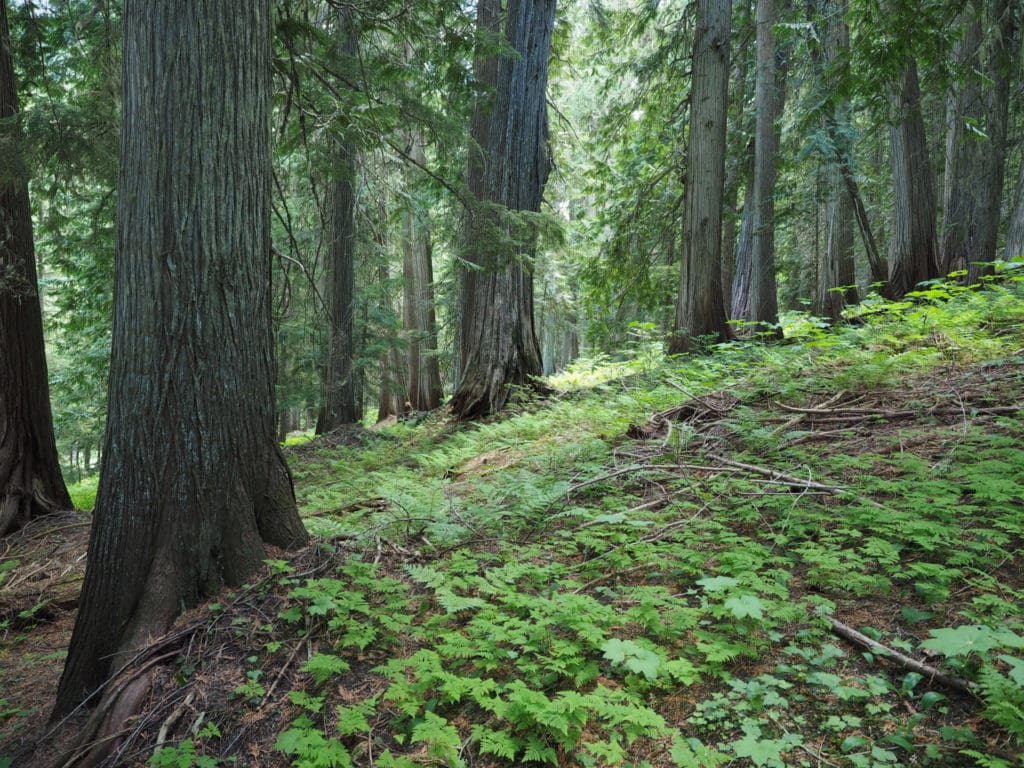Today’s announcement from the B.C. government regarding old-growth forestry deferrals is encouraging says Yellowstone to Yukon Conservation Initiative (Y2Y), but can still go further.
A just-released report and maps identify 5 million hectares of remaining at-risk, productive old growth forest, with potentially 2.6 million hectares to be deferred from logging in consultation with First Nations.
This decision produced with material from credible, independent experts, is important recognition of the loss of old growth forests in the province, and signals real interest in finding solutions based on expert advice from both Indigenous and non-Indigenous sources.
According to Tim Burkhart, Y2Y’s B.C. program manager for strategic engagement, the government’s endorsement of an evidence-based, scientific approach that defines the problem shows they are serious about finding a solution.
“For the first time the Province based their old-growth plan on science, using the right numbers, put together by a respected team of experts. The science is clear, and now the government needs to take action. This is an incredibly important step,” he says.
“B.C. now must defer logging of all at-risk old growth, and work with First Nations to develop forestry plans that support reconciliation and protect biodiversity through permanent protection.”
First Nations in the Yellowstone to Yukon region and across British Columbia have consistently called on government to stop logging irreplaceable old growth forests. Recently the Union of B.C. Indian Chiefs passed a resolution to call for “…critical funding needed to fulfill your obligations to Indigenous peoples and incur the necessary changes to B.C.’s system of forest management…” In today’s announcement, the provincial government committed $12 million in funding.
“The funding is a good start, but more support for First Nations and communities to build transition plans is needed, such as specifics on conservation financing that supports Indigenous-led conservation solutions,” says Burkhart.
According to expert opinion and requests from Indigenous communities, logging should stop in all at risk old growth. Yet, according to Burkhart, deferrals to be enacted in consultation with Indigenous Nations, are not permanent protection, and B.C. will need to bring in new measures to ensure these critical areas are not on the chopping block again in the future.
“Nations and communities in the inland temperate rainforest of B.C. have been calling for change — through council resolutions, public statements, rallies and road blockades”, says Y2Y’s Upper Columbia program manager, Nadine Raynolds. “The Columbia mountains have some of the largest, oldest, most magnificent rainforest trees on the planet. We are encouraged that the Province is making the right choices to move forward in protecting this unique ecosystem.”
Research shows protecting old-growth forests is a nature-based solution to the impacts of climate change. Old growth forests, including those in B.C.’s rare inland temperate rainforest, are extremely productive places that provide important habitat for a vast array of species.
These places are home to endangered species and cedar trees more than 1,000 years old. By protecting these areas, carbon and water are conserved, and biodiversity loss can be addressed. This will have immediate positive impacts on species such as caribou.
“Protecting old growth is a quadruple-win. We can recover endangered mountain caribou populations, retain irreplaceable forests that store carbon and fight climate change, support recreation, and live up to the principles of reconciliation and listening to First Nations,” says Raynolds.


